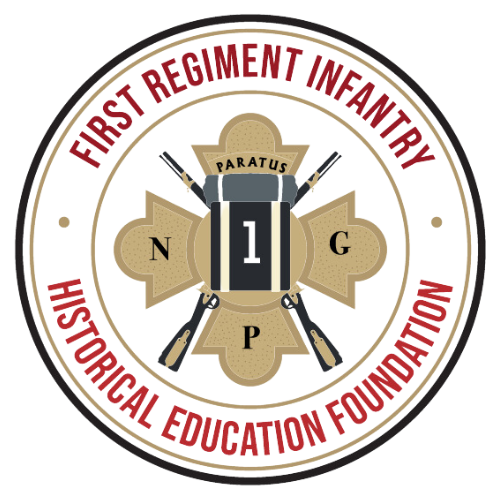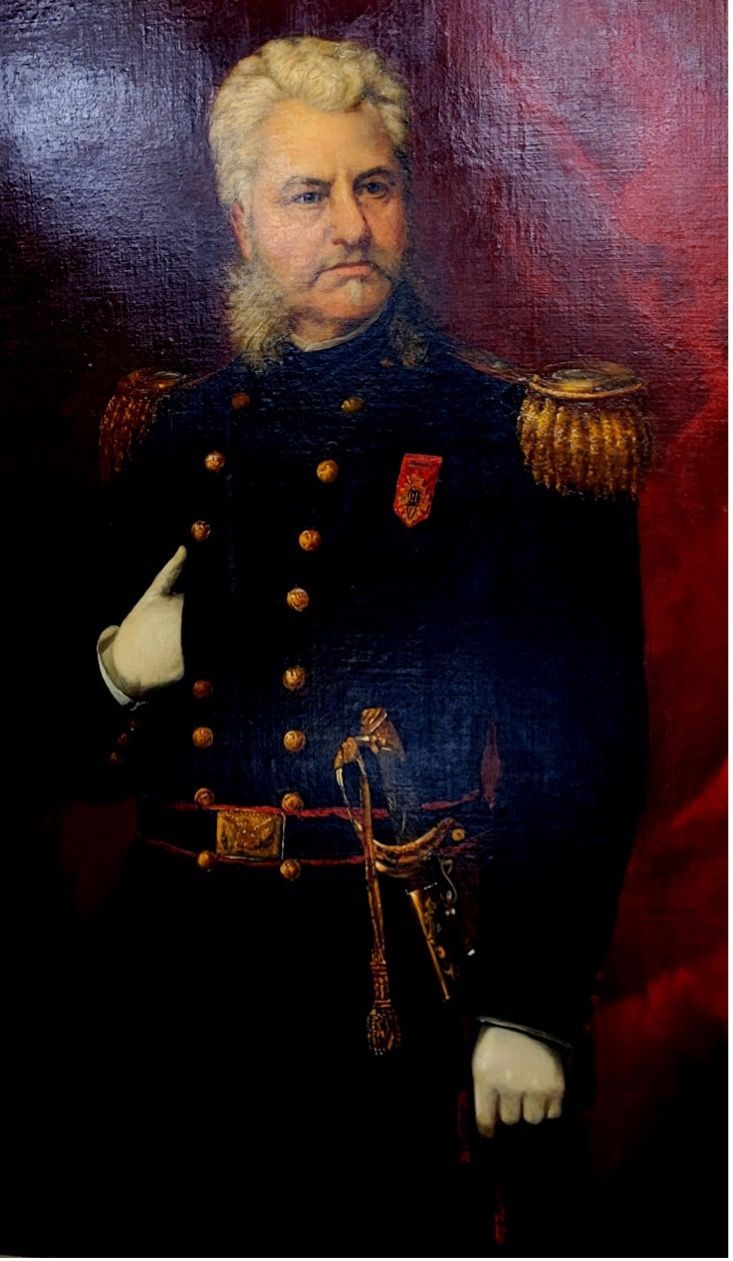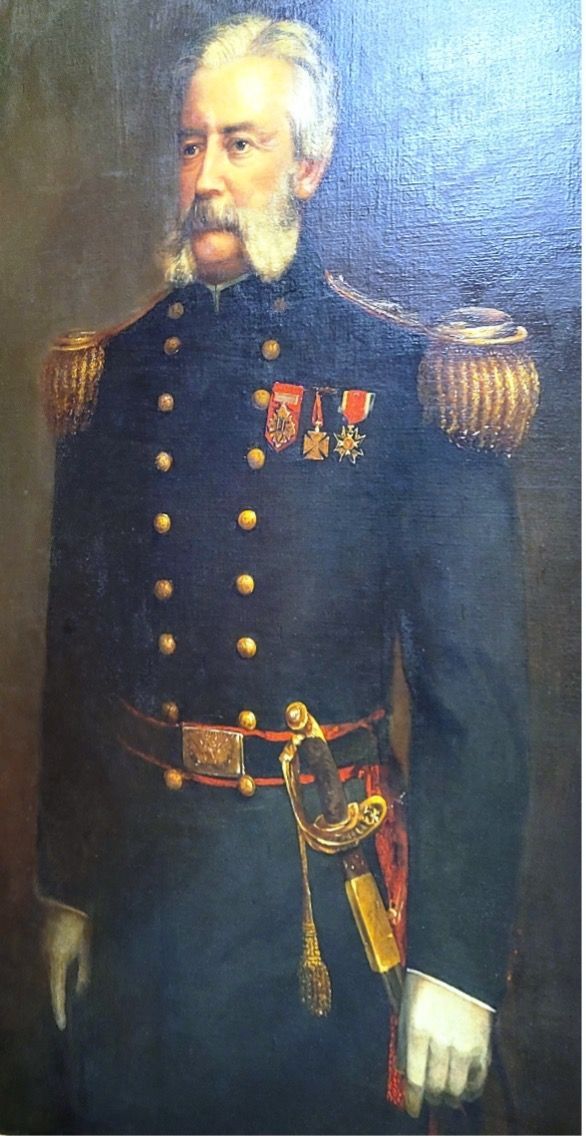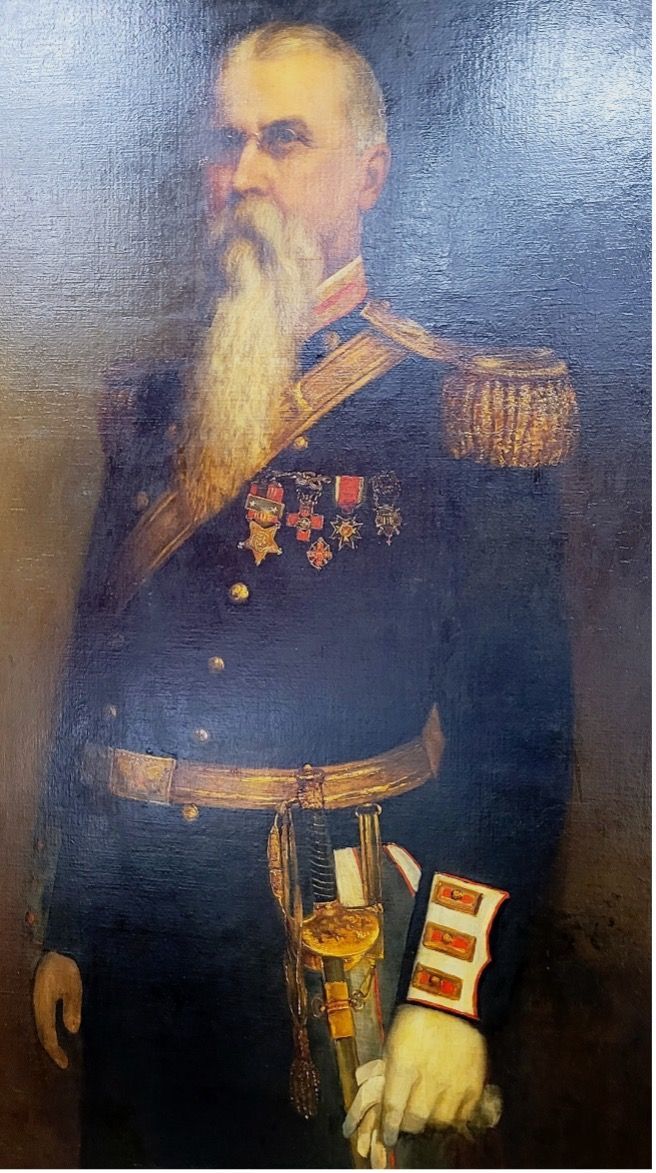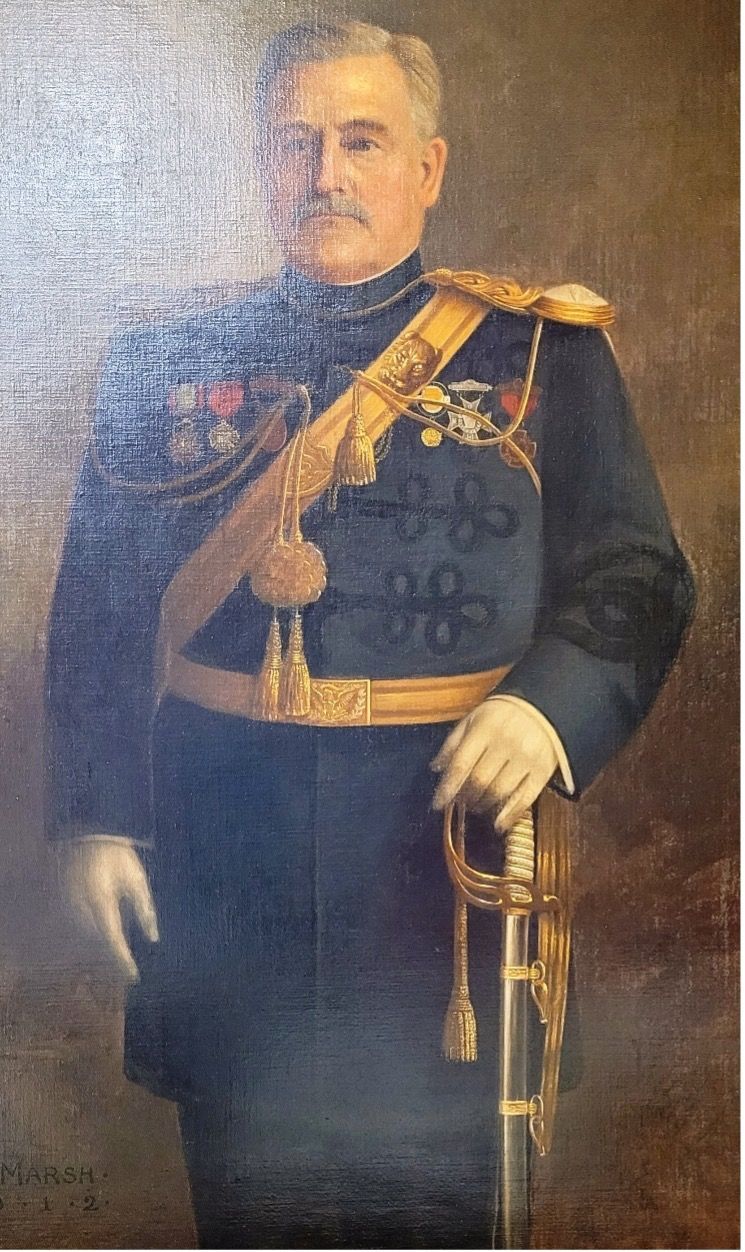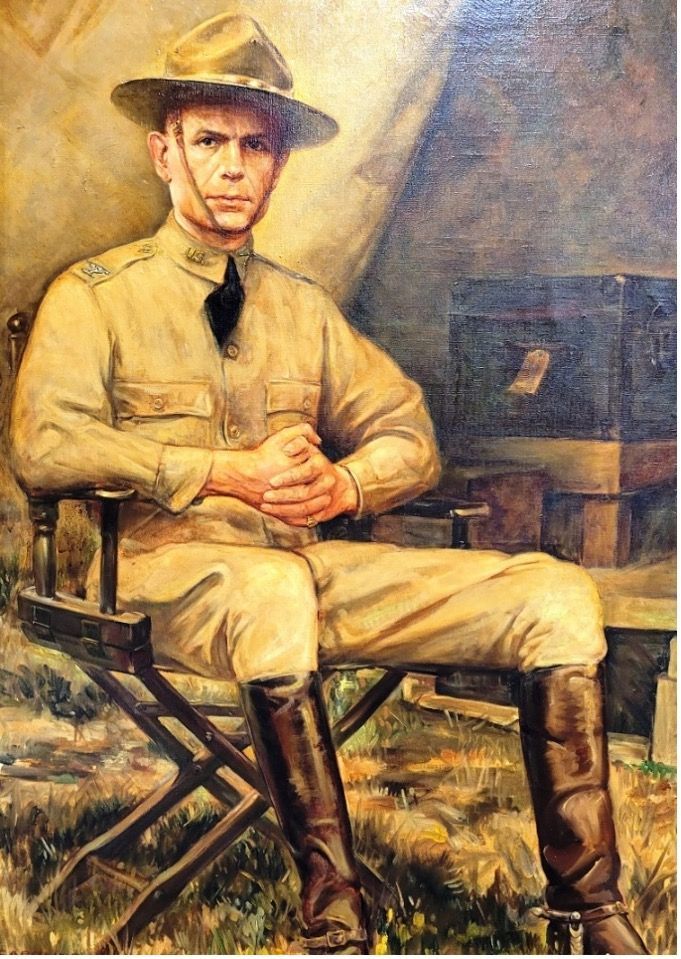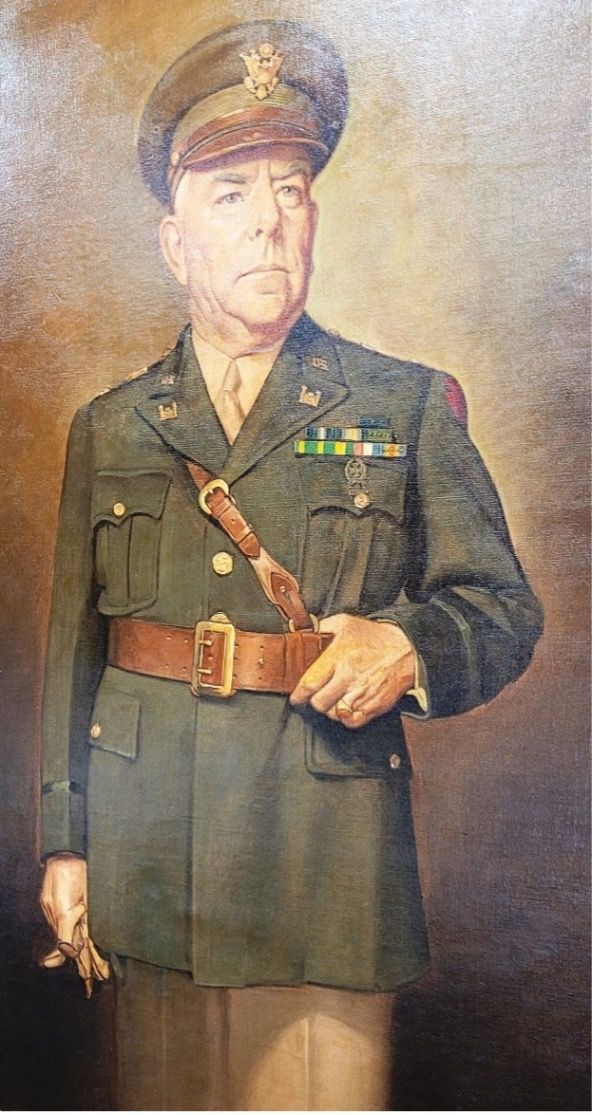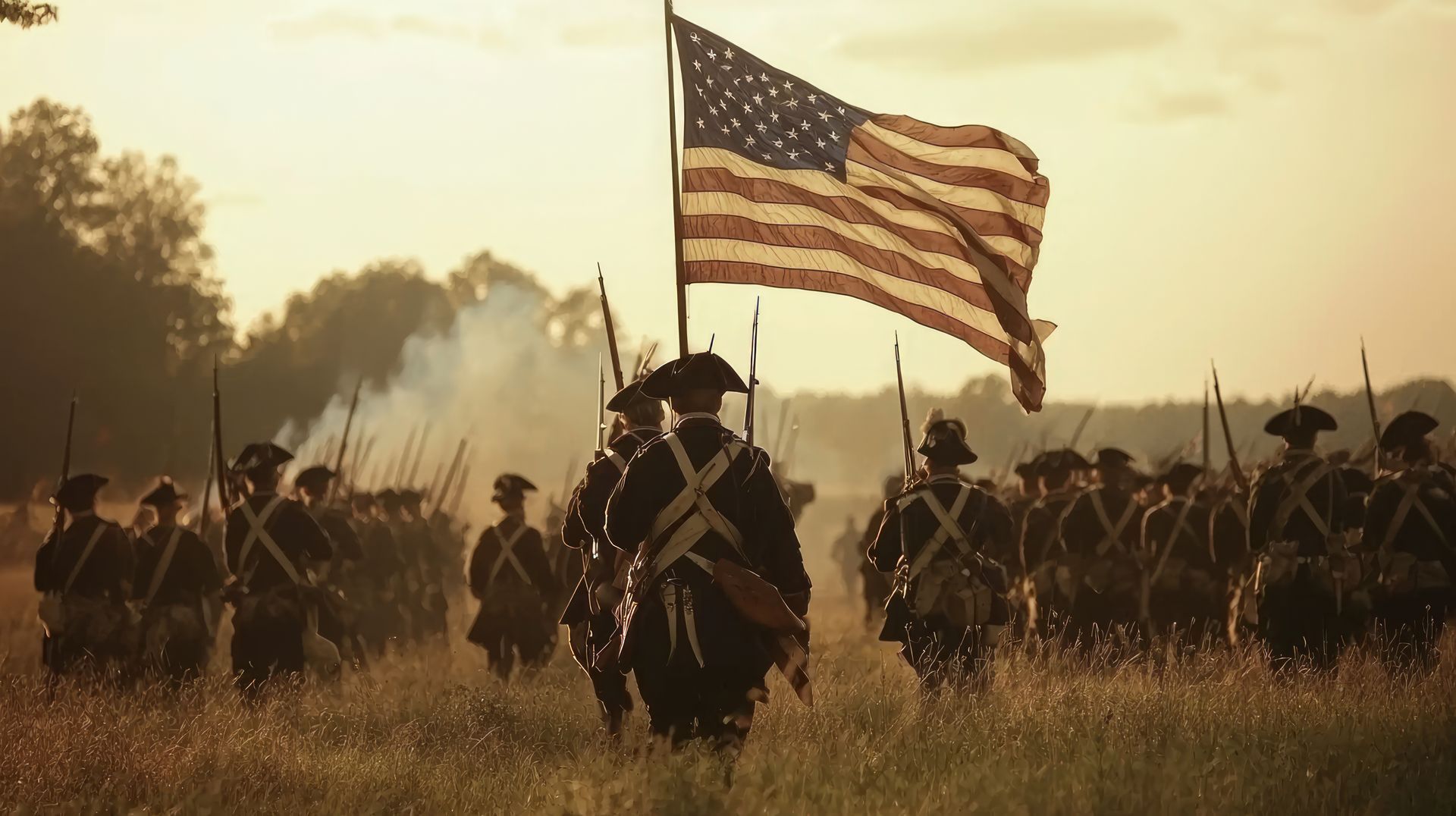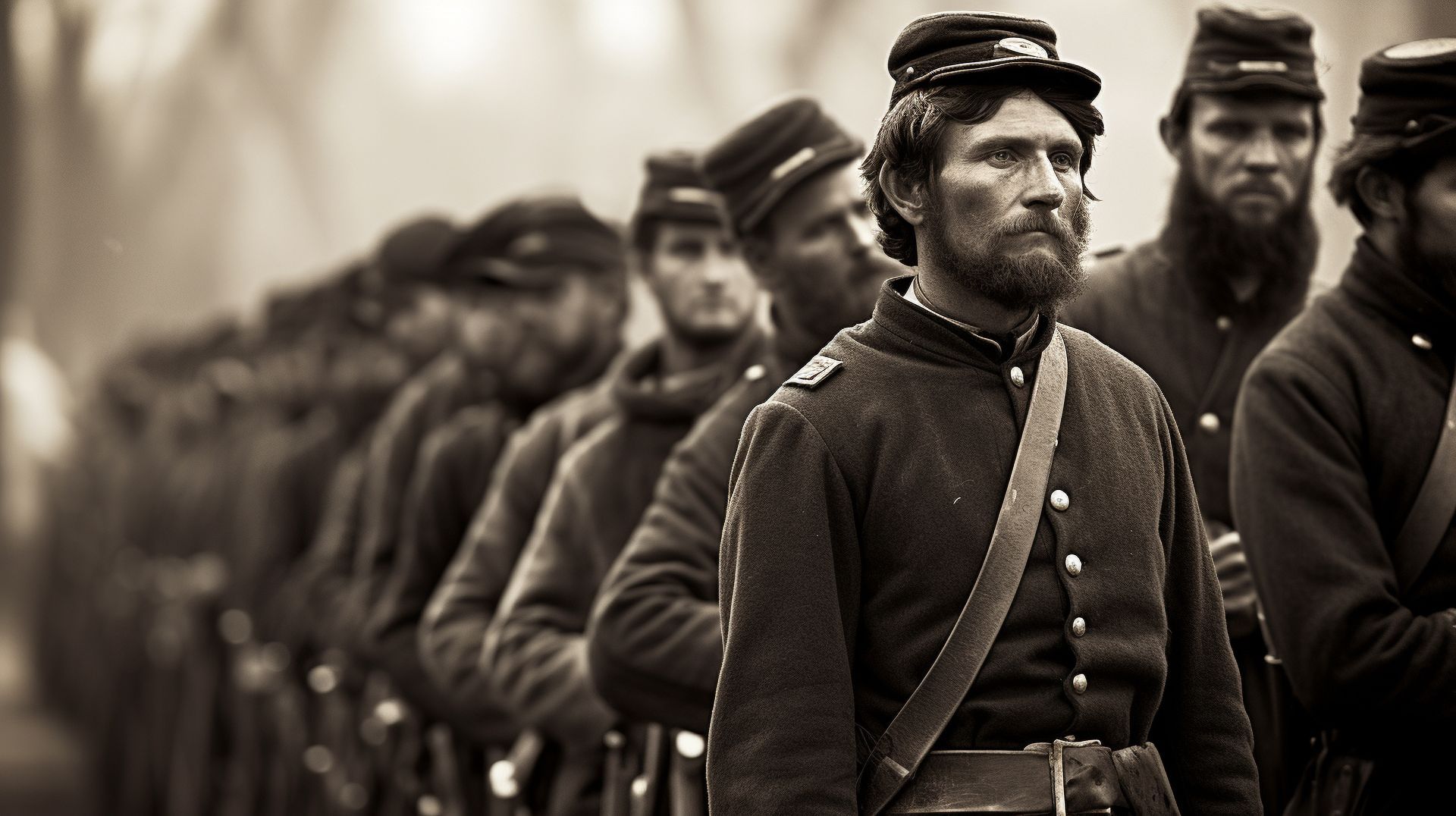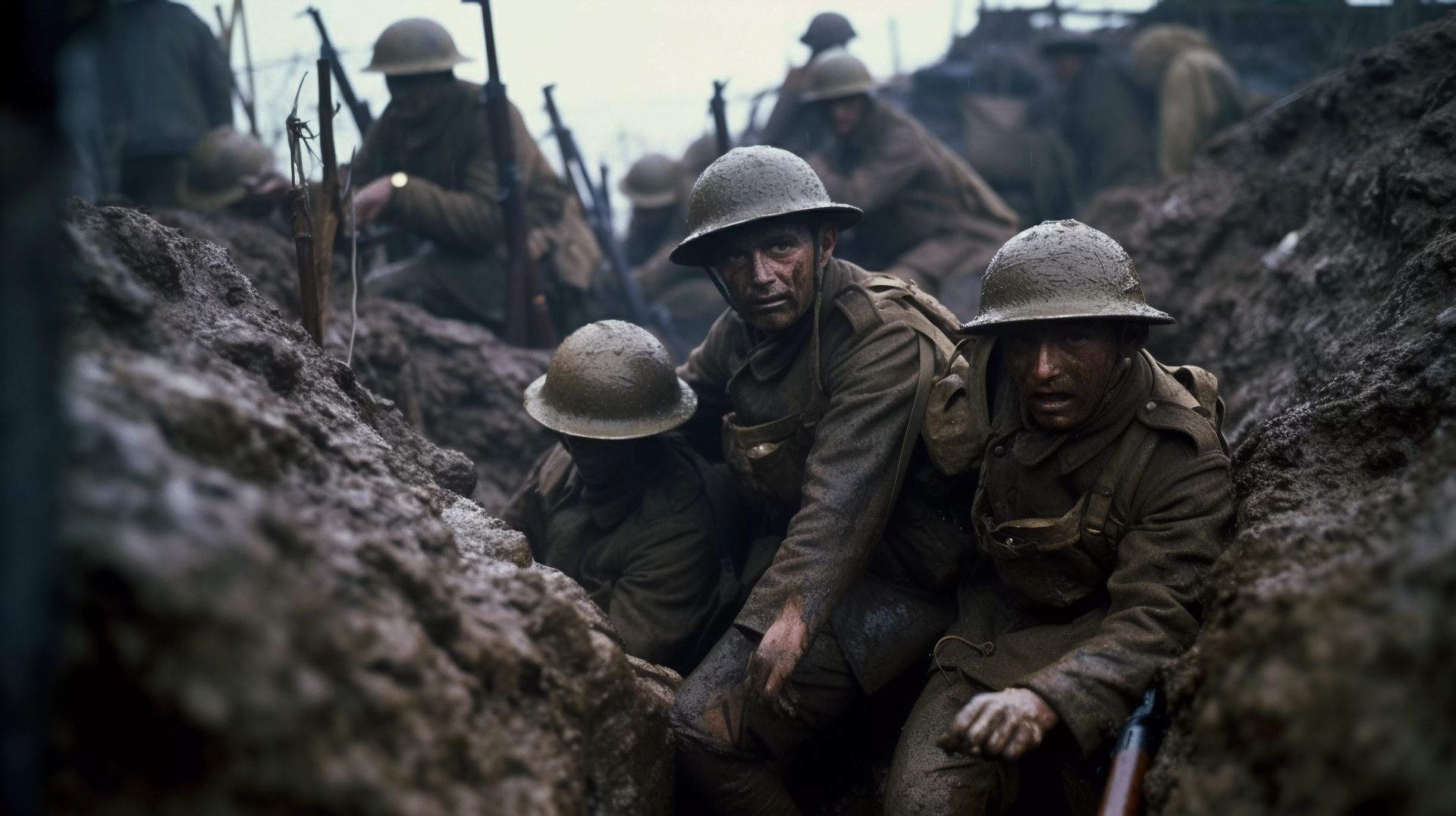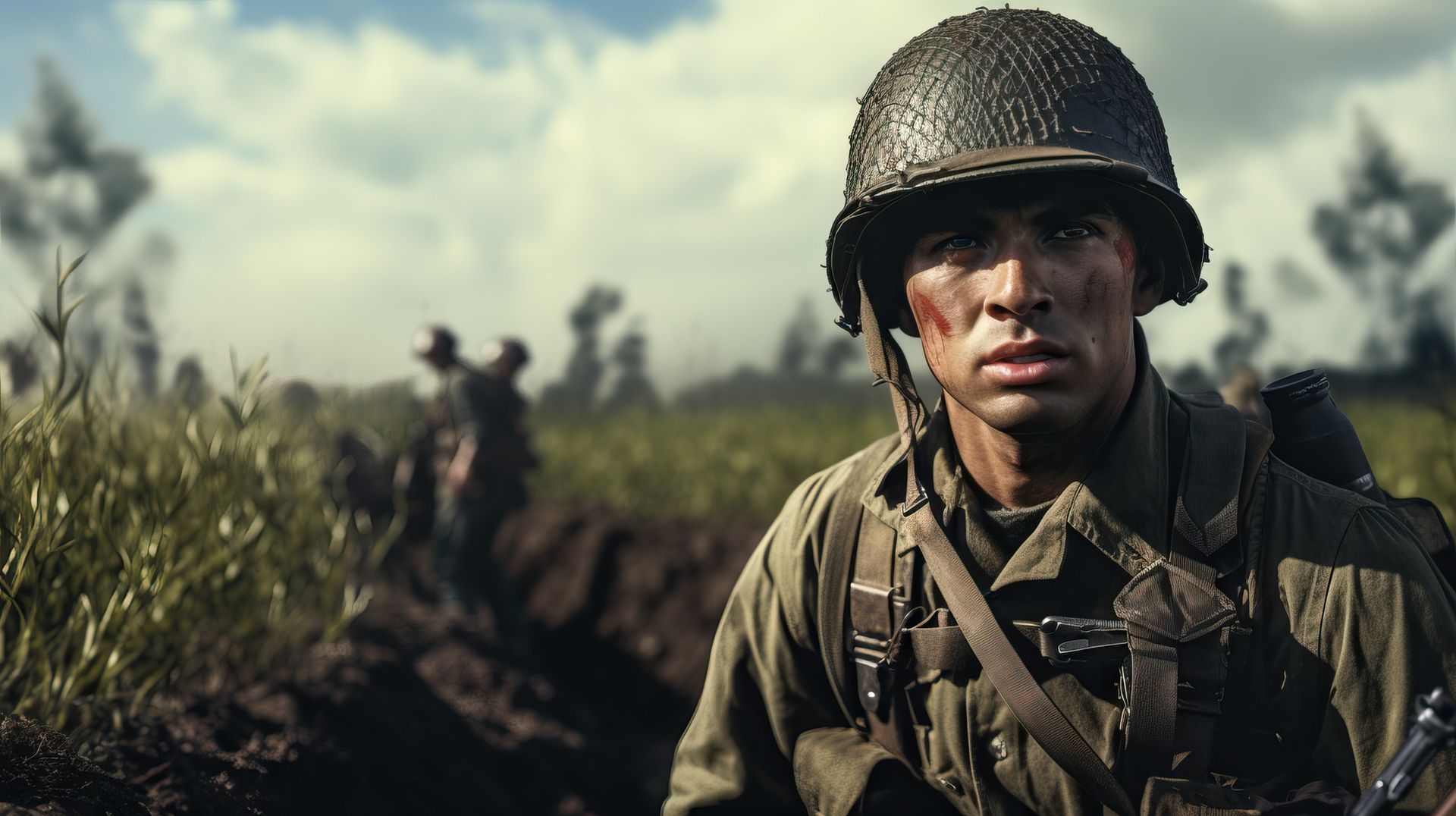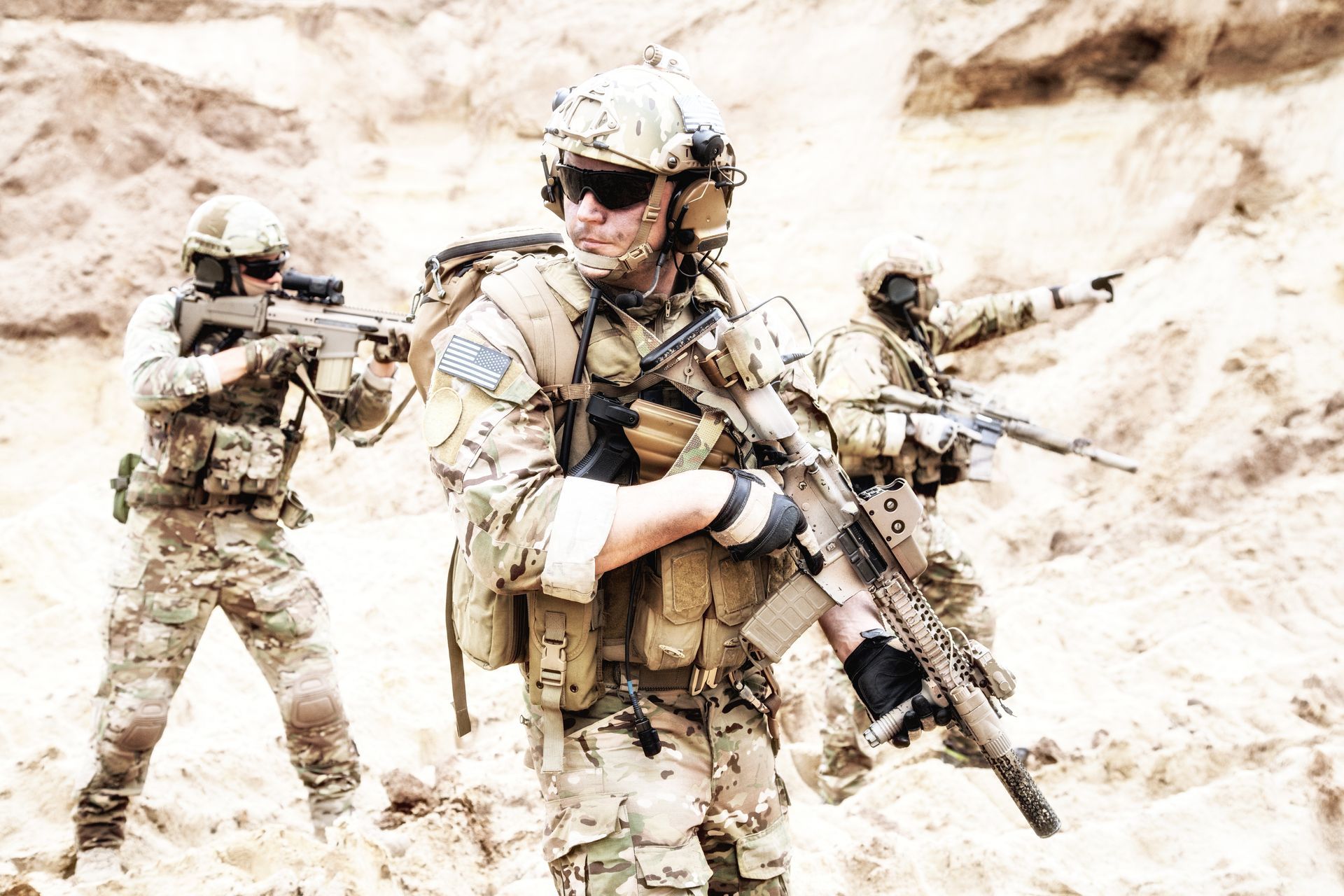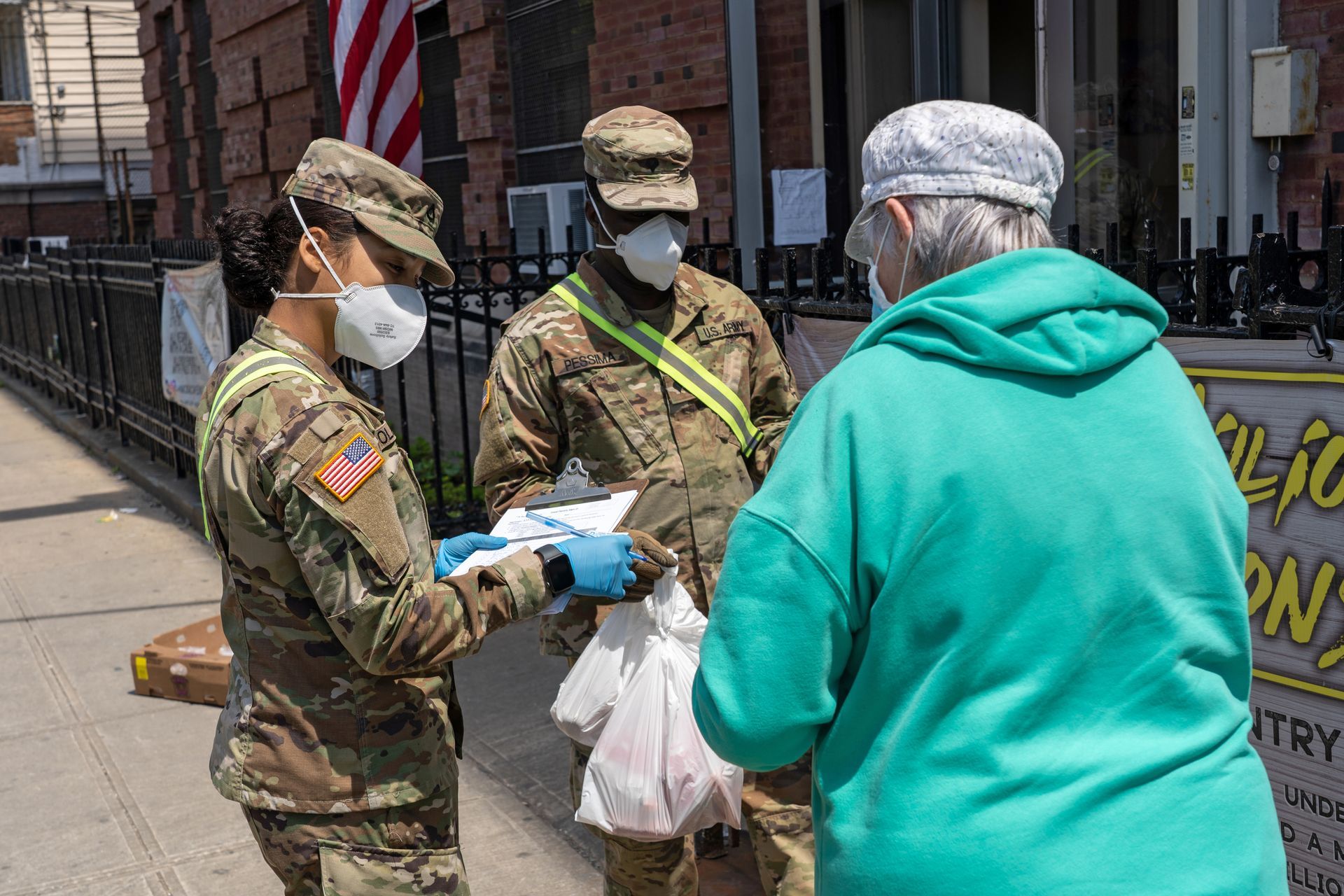Portraits
Officer Senior Leadership
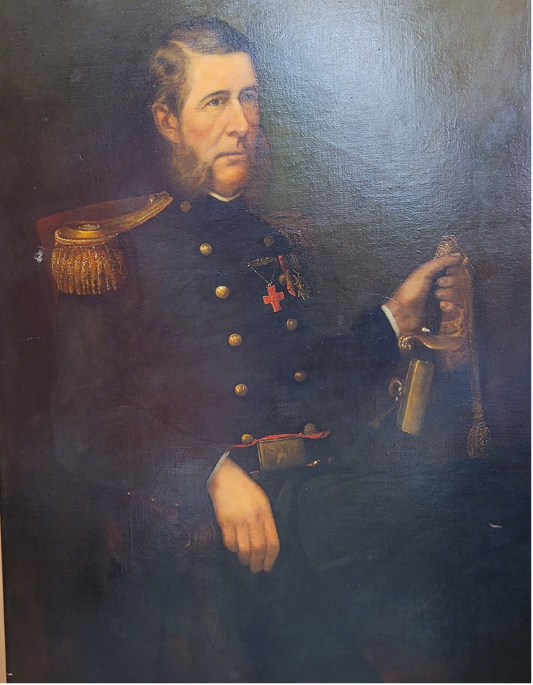
Peter Clarkson Ellmaker
April 1861 – August 1862
Colonel, 119th Regiment, Pennsylvania Volunteer Infantry, Union Army, Civil War.
Born 11 August 1813 | Died 12 October 1890
Appointed United States Marshal, Eastern District, Pennsylvania, Philadelphia, PA on July 22, 1865.
Colonel Peter C. Ellmaker: Joined the Artillery Corps Washington Grays and became its 5th Commander. In 1861 he commanded the First Regiment Infantry – Gray Reserve, and in July 1862 help organize and commanded the 119th Pennsylvania Volunteer Infantry, in the Civil War. As part of the First Brigade, Second Division, Sixth Corps, the 119th earned 10 battle streamers, from Fredericksburg to Appomattox. He was a key figure in organizing the Veterans Corps- First Regiment in 1875.
Portrait painted in 1896 by David Benjamin Bechtel
Napoleon Bonaparte Kneass
August 1862 – January 1863
Civil War Union Army Officer.
Born 17 April 1818 | Died 16 March 1888
He served during the Civil War as Colonel and Commander of the 7th Pennsylvania (1862) Militia.
Painted in 1895 by David Benjamin Bechtel
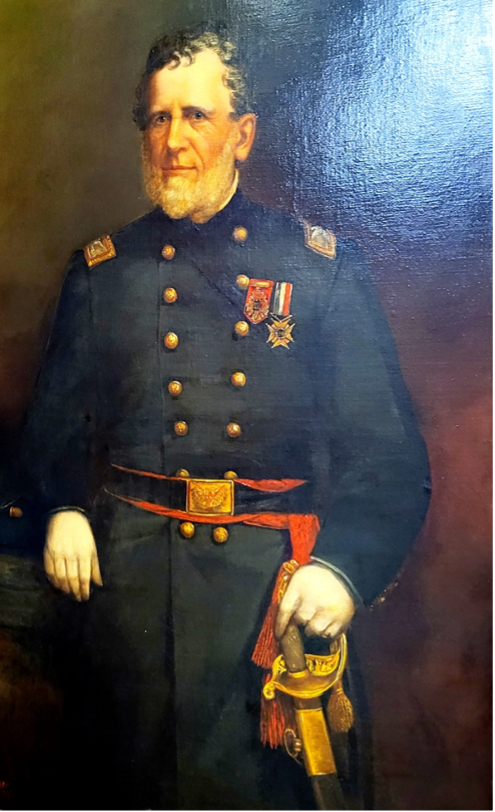
Charles Sommer Smith
March 1863 – October 1865
Born: October 1813 | Died: June 1891
Wounded at Spotsylvania Courthouse 10 May 1864 in knee as a private in Company K, 119th. Wound resulted in amputation.
Painted in 1895 by David Benjamin Bechtel
Charles Mallet Prevost
September 1866 – December 1867
Born: 19 September 1818 | Died: 5 November 1887
Branch of Service: Infantry
Unit: 118th Pennsylvania Infantry
Civil War Union Brevet Brigadier General. A pre-Civil War lawyer and United States Marshall in the Wisconsin Territory, he was a Captain in the 1st Regiment of Pennsylvania Militia (known as the "Gray Reserves") when the conflict began. He was tabbed to serve on the staff of Brigadier General Francis E. Patterson as an Assistant Adjutant General before he was appointed Colonel and commander of the 118th Pennsylvania Volunteer Infantry, which was known as the "Corn Exchange Regiment", on August 28, 1862. During the end of the September 1862 Antietam Campaign his regiment was engaged unsupported at Shepardstown, West Virginia against a sizable Confederate force. Colonel Prevost, in an attempt to stabilize his wavering line in the face of heavy fire, grabbed the regiment's colors and placed himself at the front line. Moments after doing so he was shot in the shoulder and severely wounded by a shell fragment. Carried from the field, his men would go on to sustain almost 300 casualties. Out of action for the rest of the year, he would come back to command his regiment prior to the May 1863 Battle of Chancellorsville before being fully recovered. In that battle his led his men while his arm was strapped to his side, and after the conflict was over it was apparent he could no longer effectively serve in the field. After being sent to Harrisburg, Pennsylvania to take charge of the Veterans Reserve Corps camp there, he resigned his Pennsylvania Colonel's commission on September 30, 1863, and was commissioned as Colonel of the 16th Veterans Reserve Corps on that date. He commanded Camp Butler Military Prison in Springfield, Illinois from 1864 to 1865, received a brevet of Brigadier General, US Volunteers on March 13, 1865 for "meritorious services", and was honorably mustered out in June 30, 1866. After the war he became a successful insurance agent, and a Major General in the Pennsylvania National Guard.
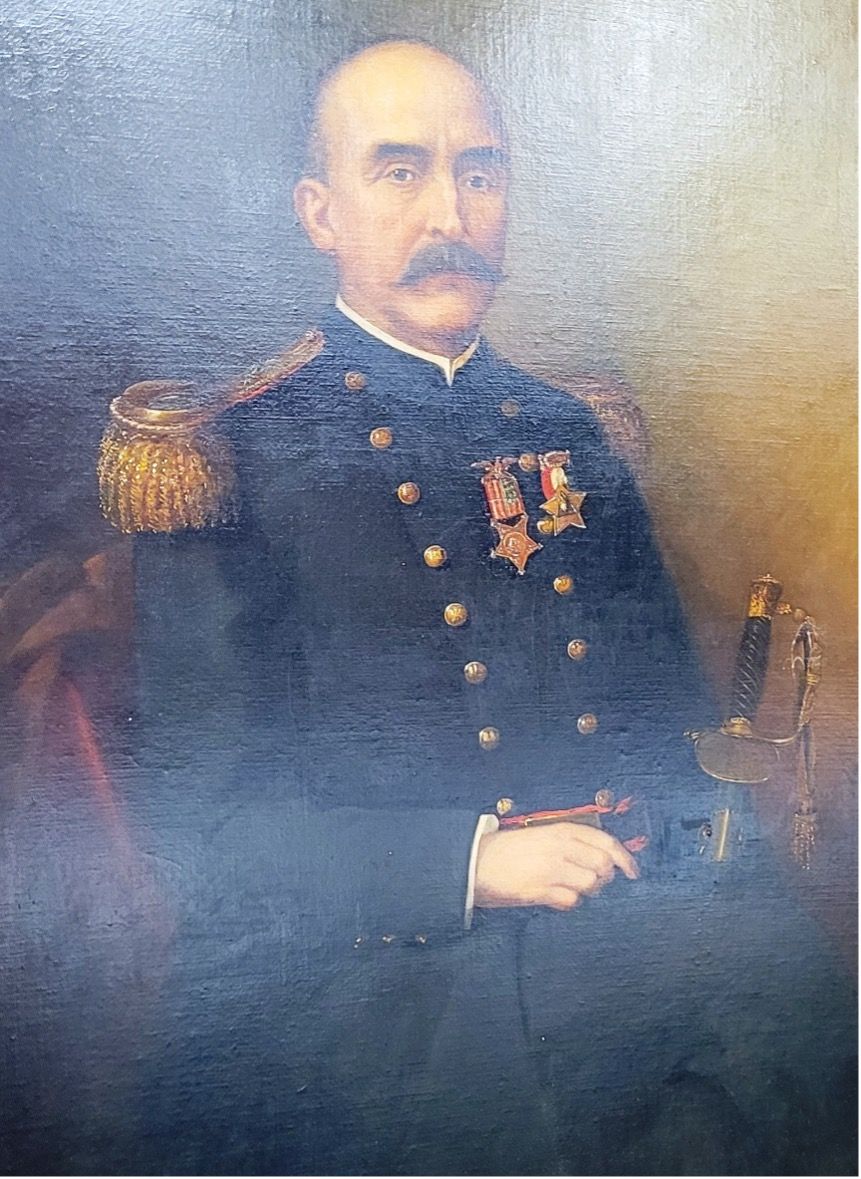
William McMichael
January 1868 – November 1868
Enlisted on 8/15/1861 as a Captain.
On 8/15/1861 he was commissioned into US Volunteers Adjutant Genl Dept . He was Mustered Out on 3/20/1866
Promotions:
- Captain: 8/15/1861 (Captain & Asst Adjutant General)
- Major 8/16/1862 (Major & Asst Adjutant General)
- Lt Colonel 3/13/1865 by Brevet
- Colonel 3/13/1865 by Brevet
Painted in 1895 by David Benjamin Bechtel
James William Latta
December 1868 – June 1873
Born: 19 April 1839 | Died 26 March 1922
Buried in Laurel Hill Cemetery East
Civil War Union Army Officer. He enlisted in the 119th Pennsylvania Volunteer Infantry on August 22, 1862, and was mustered in with a commission of 1st Lieutenant of Company E on September 1, 1862. Promoted to Captain and commander of Company E on March 4, 1864, two months later he was mustered out of the 119th Pennsylvania and mustered into the Adjutant General Department with his rank of Captain of Volunteers (May 21, 1864). He served in the AG Department until his muster out on January 20, 1866, having received brevets of Major, US Volunteers and Lieutenant Colonel, US Volunteers (Match 13, 1865).
Obituary reads “General Latta who built the PA Guard is dead” 27 Mar 1922 Harrisburg Evening News https://www.ancestry.com/discoveryui-content/view/97919532:60525
Portrait painted in 1895 by David Benjamin Bechtel

Richard Dale Benson
June 1873 – December 1877
Born: 6 December 1841 | Died 29 August 1920
Civil War Union Army Officer. He was commissioned as a 2nd Lieutenant, in Company B, 114th Pennsylvania Volunteer Infantry, and was mustered in on August 11, 1862. Promoted to 1st Lieutenant on January 1, 1863, he served as an aide-de-camp on the staff of Brigadier General Charles H. Graham. He was brevetted Captain, US Volunteers and Major, US Volunteers on March 13, 1865, and was honorably mustered out on May 29, 1865 at Arlington Heights, Virginia.
After the war he became the President of the Pennsylvania Fire Insurance Company. He also served in the Pennsylvania National Guard, rising to Colonel of the 1st Pennsylvania National Guard regiment, and to Brigadier General. In 1877 he participated in the suppressing of the riots in Pittsburgh, Pennsylvania.
In 1909 he served on the Fiftieth Anniversary of the Battle of Gettysburg Commission, whose work culminated in the 50th Anniversary reunion encampment of Gettysburg veterans from July 1 to 4, 1913.
Portrait painted in 1895 by David Benjamin Bechtel
Theodore Edward Wiedersheim
October 1878 – June 1887
Born: 1846 | Died 10 February 1916
Buried in Laurel Hill Cemetery
Civil War Union Army Soldier. He served during the Civil War as a Corporal in Company F, 32nd Pennsylvania Emergency Troops, being mustered in on June 26, 1863, and being mustered out on August 1, 1863.
He later rose to the rank of Colonel in the Pennsylvania National Guard. He also served as Chairman of the Philadelphia branch of the National Security League, and as vice president of the Girard National Bank.
He died at the podium while giving a speech to the Wayne Public Safety Association in Wayne, Pennsylvania on February 10, 1916.
Portrait painted in 1895 by David Benjamin Bechtel
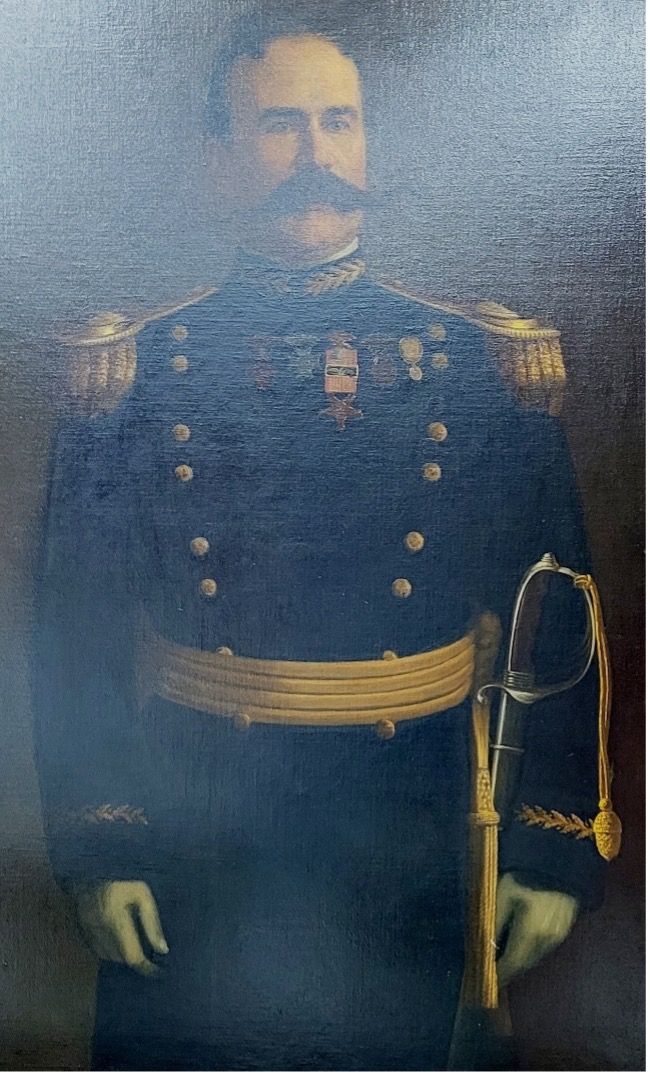
Wendell Phillips Bowman
July 1887 – May 1898 and November 1898 – August 1907
Early life
Wendell Phillips Bowman was born in Byberry, Pennsylvania on October 31, 1847. He lived at his family's home, "Cream Ridge," and was educated at the Benjamin Rush School and the Byberry Friends' School.
American Civil War
He was still a boy when the American Civil War broke out in 1861, and was too young for military service, so he became a drummer for a militia unit, the Byberry Guards.
At age 15 he joined the 44th Pennsylvania Militia, which was later mustered into federal service as a unit of the Pennsylvania Reserves. He was a participant in the 1863 Battle of Gettysburg, and was discharged later in 1863.
In July, 1864 Bowman joined the 197th Pennsylvania Infantry, and he served until November.
He then joined an Iowa regiment, in which he served until being discharged for ill health. Bowman was unable to walk as a result of his illness and complications caused by the harsh conditions of his service, and used crutches until he was able to begin walking unaided again in 1874.
Post–Civil War
After the war Bowman studied law in the firm of George H. Earle, Sr. and Richard P. White (brother and husband of Caroline Earle White), attained admission to the bar, and practiced in Philadelphia.
Bowman was active in the Grand Army of the Republic, and served as Judge Advocate of the Department of Pennsylvania. He was also a sought after speech maker, and gave orations for Pennsylvania's Republican Party, Decoration Day commemorations, and other celebrations.
On April 18, 1876 Bowman married Elizabeth (Lizzie) W. Malcolm (died October 26, 1929), the daughter of Baptist clergyman Thomas Shields Malcolm.
Continued military service
In 1877 Bowman joined the 20th Pennsylvania Regiment, which was organized to respond to labor unrest during the Great Railroad Strike of 1877.
In 1878 he received a commission as a captain in command of Company H, 1st Regiment, Pennsylvania National Guard. He advanced through the ranks and became regimental commander with the rank of colonel in 1887.
Spanish–American War
Bowman volunteered for the Spanish–American War and his regiment was mustered into federal service in 1898. He was seriously injured during training at Mount Gretna on May 2, 1898, and was unable to lead the regiment when it departed Pennsylvania, so command passed to his lieutenant colonel, J. Lewis Good.
The war ended before the 1st Pennsylvania departed for Cuba. Bowman resumed command after the regiment returned to Pennsylvania from its encampment in Tennessee.
Post-Spanish–American War
In 1907 Bowman became commander of Pennsylvania's 1st Brigade as a brigadier general.
In 1909 he became commander of the Pennsylvania National Guard Division, the organization later known as the 28th Infantry Division, and was promoted to major general. He served until retiring in 1910, and was succeeded by Charles B. Dougherty.
J. Lewis Good
May 1898 – November 1892 and September 1907 – December 1910
Colonel Wendell P. Bowman, who commanded the first Regiment, National Guard of Pennsylvania, and was commissioned as Colonel of the First Pennsylvania Volunteer Infantry, was seriously injured on May 2, 1898, at Mount Gretna, and was unable to be mustered. The regiment entered the service of the United States under the command of Lieutenant Colonel J. Lewis Good.
GOOD, J. Lewis, Lieutenant, Cot.; Residence: Philadelphia, Pa. (National Guard of Pennsylvania); Enrolled April 28, 1898; Mustered in May 11, 1898; in command of Regiment from date of muster in. Aug.17, 1898. Mustered in as Colonel to date May 13, 1898; Mustered out with Regiment Oct. 26, 1898.
Portrait painted by JJ Marsh 1912
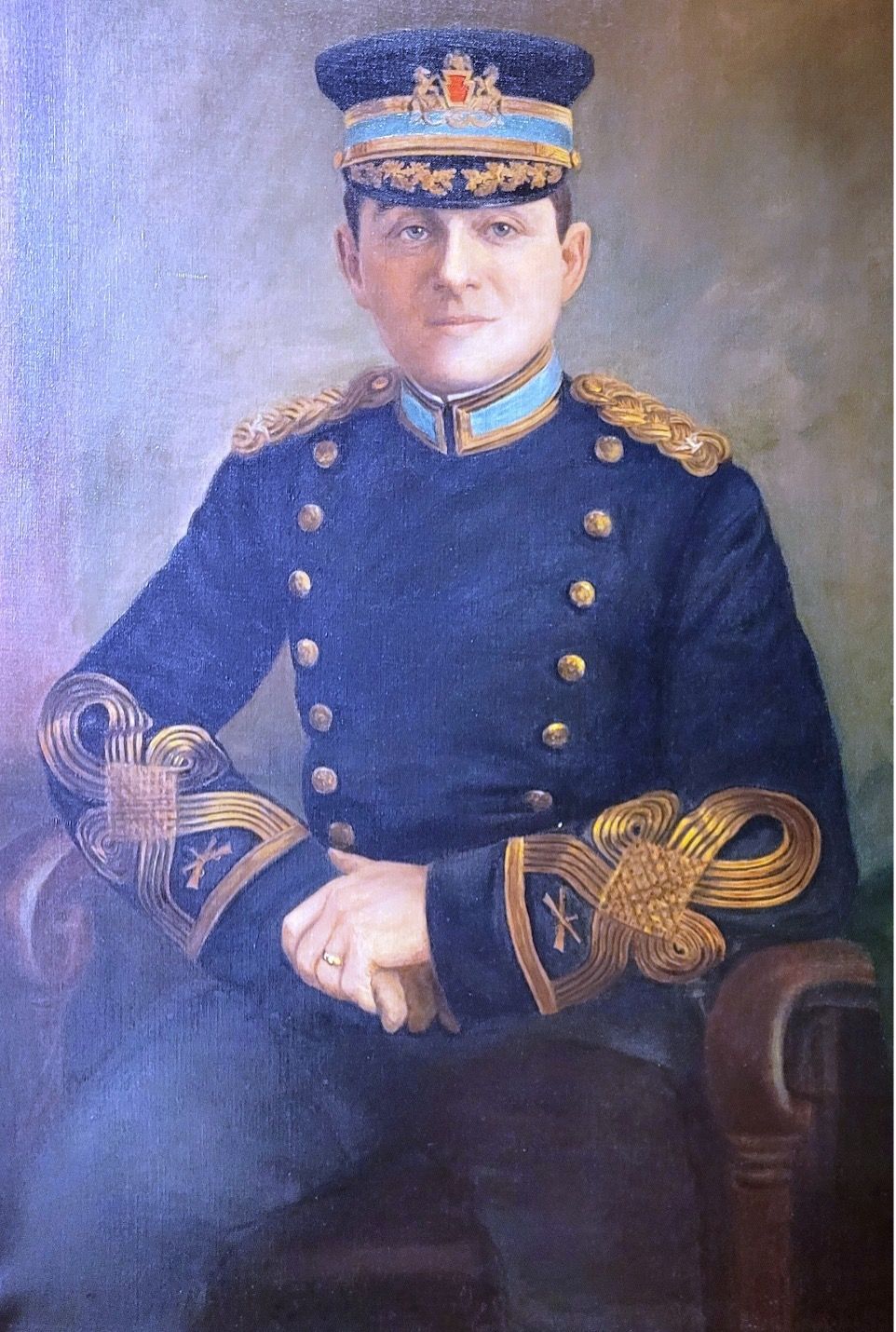
William F Eidell
April 1898 – 10 May 1898
Born 29 August 1869 | Died 17 April 1932
Served April 1898 – 10 May 1898 as First Sergeant Company B during the mobilization of the 1st Regiment for the Spanish American War. He was discharged 26th of October 1898.
MAJ William F. Eidel was elected colonel of the 1st Regiment NGP to fill the vacancy which has existed since J. Lewis Good was made brigadier general. 24 February 1911 - The Times Leader (Wilkes-Barre, Pennsylvania)
His occupation was listed as a tanner in Olley, outside of Reading, PA.
Charles C. Allen
April 1916 – February 1917
Born: 19 Nov 1893 | Died: 24 Dec 1942
Buried: Eglington Cemetery, Clarksboro, NJ
Served as a First Lieutenant in Company C during the Spanish American War: 28 April – 11 May 1898. Appointed as a Captain Infantry 13 Apr 1911; Major 9 Apr 1918; LTC 2 March 1919; Colonel 31 May 1919. Discharged as Colonel 30 June 1920.
He served with the 33rd Division staff and Military Attache to Cairo, Egypt until the termination of World War I. He was awarded the Victory Medal with the Meuse-Argonne clasp.
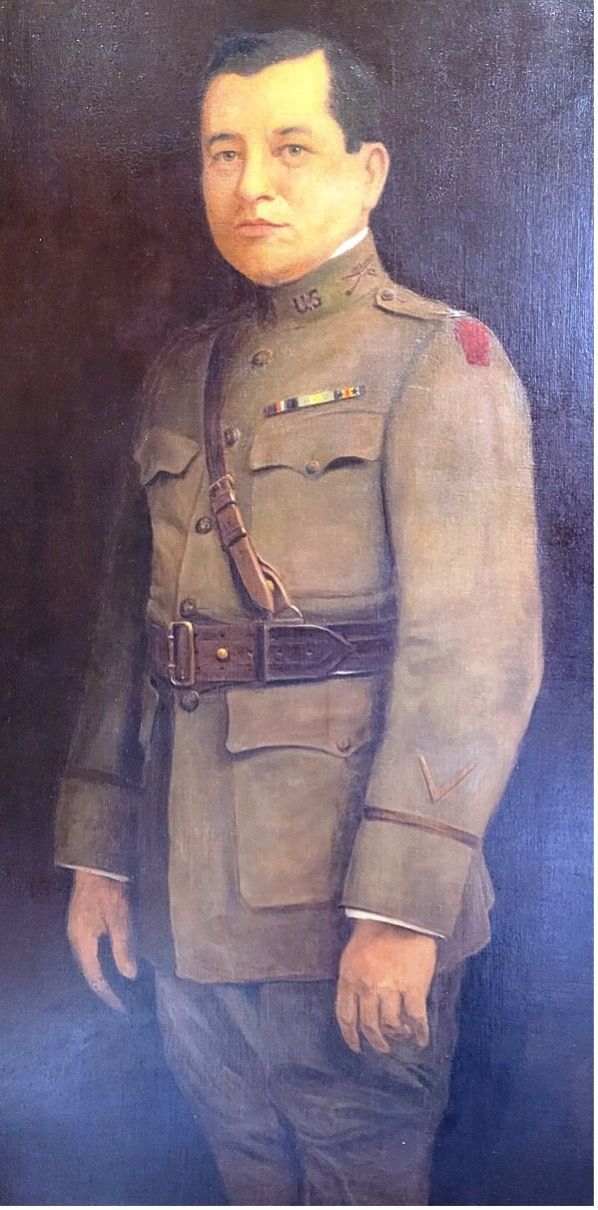
Millard Dalton Brown
March 1917 – July 1918
Born: 8 August 1882 | Died 21 September 1957
Drafted into Federal Service for World War I as a Colonel in the National Guard and served with the 1st Infantry Regiment from 28 March 1917 until 11 October 1917. Served with the 109th Infantry until 31 July 1918. Participated in the Defense of Champagne-Marne, Aisne-Marne, Chateau-Talsrry. Discharged 16 Nov 1918. Awarded Victory Medal with Champagne-Marne and Aisne-Marne Clasps.
He was president of Continental Mills, Inc. in Germantown, Philadelphia and past president of the Union League.
Jackson Whitney Study
June 1920 – April 1933
Born: 8 July 1883 | Died 16 March 1950
For World War I he entered federal service as an Infantry Captain and transferred branches to as an Engineer Captain in June 1917. He was promoted a Major of Transportation in November 1917 and LTC Transportation in November 1918. He was discharged 25 June 1919. He had received a Purple Heart.
He was promoted to Colonel, 103rd Engineers 18 July 1921. He was listed in the US Official National Guard Register of 1925 as Colonel with the 103rd Engineer Regiment.
At the time of his death in 1950, he was chief clerk to the vice president in charge of operations of the Pennsylvania Railroad.
Painted by John Capolino, A painter of many official military portraits, John Capolino was Director of the Spring Garden Institute and Chestnut Hill Art Center in Philadelphia. He was also Curator of the Woodmere Art Gallery in Philadelphia. He painted murals including ones for the Philadelphia Public Library and Municipal Court Building.
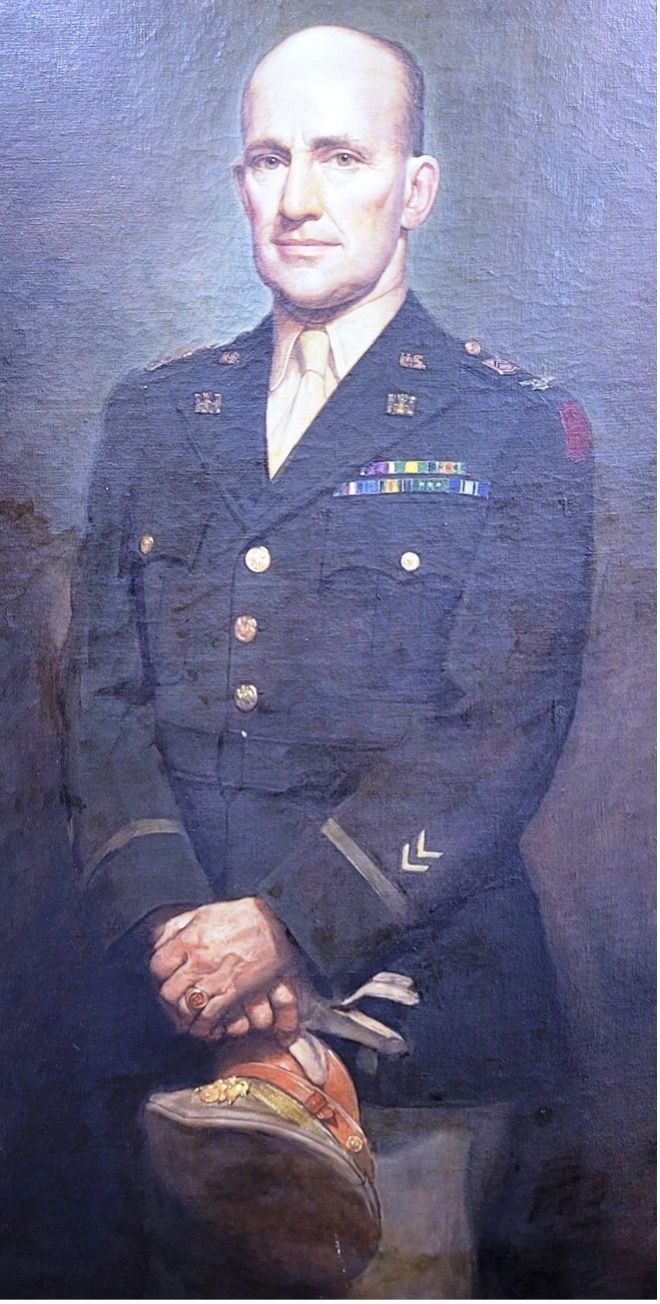
John Milton Gentner
April 1933 – February 1938
Born 26 Oct 1889 | Died 1 Nov 1966
Buried Arlington National Cemetery
He enlisted as a privte and served on the Mexican Border in 1916. During World War I, he enlisted in the First Regiment Infantry from 28 March 1917 to 14 August 1914, then transferred as a Captain to Company C in the 109th Infantry through the 6th of September 1918, when he was wounded by machine gun fire at Fismes, France. He participated in the Champaign, Chanpaign-Marne, Marne Aisne and Oise-Aisne champaigns. He retired in 1938 as a colonel in the Pennsylvania National Guard, only to be recalled for World War II. He retired as a Brigadier General in 1957.
While not in the military, he was an engineering inspector in the textile industry.
Horace Johns Inman
March 1938 - February 1941
Born: 23 July 1878 | Died: 22 May 1953
Buried in Arlington Cemetery, Drexel Hill, PA
Horace J. Inman enlisted as a private in Company G, 1st Regiment Infantry, Pennsylvania Volunteers on 28 April 1898 and mustered out on 10 May 1898.
He was commissioned as a Second Lieutenant Infantry on the 18th of July 1910. Promoted to First Lieutenant on 20 Sep 1918, then Captain in the 109th Infantry on 5 Nov 1918.
He was called to active federal service 28 March 1917 as a commissioned officer. He saw service in the 1st Pennsylvania Infantry from 28 April 1898 to 26 October 1898; then 28 March 1917 to 17 Oct 1917; and finally in the 109th Infantry from the 18thh of October 1917 to 21st of June 1919. He was discharged at Camp Dix on the 21st of June 1919.
Major Inman commanded 1st Battalion 103rd Engineers (Combat) listed on the 18th of July 1921, with an address in Norwood, PA.
Painted by Ralph Pallen Coleman was an American painter and illustrator. His career spanned more than half a century during which he illustrated stories for many magazines, and later, religious illustrations and paintings which provided images of Christianity to millions of people during the 1950s–1960s.
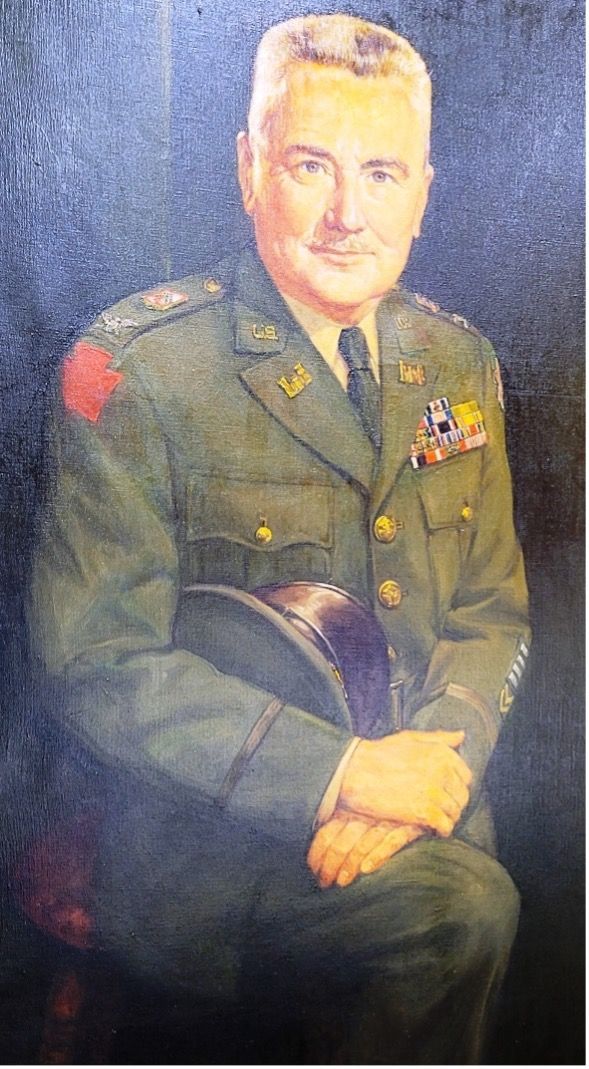
H. Wallis Andersen
February 1941 – August 1942
He was a native Philadelphian, served on the Mexican border campaign in 1916 as an Infantry (6th Pennsylvania) officer., He was transferred to the 103rd Engineer Regiment and placed in command of their 2nd Battalion at the start of WW1. His battalion provided all necessary engineer support for units of the 28th Division for their five months of combat. Discharged in 1919. Re-enlisted in 1933 as Commander of the 103rd Engineers.
He was mobilized in 1941, moved to first organize and command the 51st Engineer Combat Bn and then the 1111th Engineer Combat Group. He built that unit using OCS graduates and the draftees. He trained them first in the heat of summer in a Texas in 1942 and then the freezing cold of upstate New York on the winter of 1942-1943.
The 1111th deployed to Europe in 1943, landed in France late June 1944. They took part in the St Lo breakout, the race across France and then the battle of the Bulge.
In that fight, COL Anderson demonstrated great ability to keep his units in front of every German thrust, blowing every important bridge literally in their faces. The 1111th actions materially helped deny the Germans and victory. He was awarded the Silver Star for his leadership in this campaign.
In March 1945, the 1111th was given the mission to construct the first floating bridge over the Rhine River next to the captured Lundendorf Railroad bridge at Remagen. This was accomplished in two days in the face of consistent German fire. He won his second Silver Star for this daring effort.
COL Anderson stayed on active duty until retirement in 1950.
He is recognized by Anderson Airfield at Fort Belvoir.
Painted by John Capolino, a painter of many official military portraits, who was Director of the Spring Garden Institute and Chestnut Hill Art Center in Philadelphia. He was also Curator of the Woodmere Art Gallery in Philadelphia. He painted murals including ones for the Philadelphia Public Library and Municipal Court Building.
